Extreme Weather in Croatia Causes Problems Including Hail, Floods
May 16, 2023 - In recent days, extreme weather in Croatia has caused all sorts of problems. Storms and hail have destroyed buildings, including a kindergarten, and rivers have flooded entire towns. The rain is not expected to stop for the next seven to ten days either.
As Index writes, after 250 liters per square meter fell in just 24 hours, the water level of the Zrmanja River in Obrovac reached a historic 302 centimeters yesterday morning, which is 39 cm above the highest Zrmanja water level measured in that city. The water spilled onto the streets and made its way into the historic core. The situation is similar and also difficult in Gračac.
Meteorologists and Croatian Water authorities announced that today the situation is expected to become even more complicated, with more rain and the water levels of almost all rivers in Croatia rising.
"New forecasts from this morning indicated the possibility of large water waves in the Sava, Kupa, and Una rivers in the coming days. Very high water levels of the Kupa River are expected in the Karlovac, Petrinja and Sisak areas, and especially of the Una River in the Kostajnica area. The maximum water levels of the Kupa River in Karlovac and Una in Hrvatska Kostajnica are expected during Wednesday, May 17, 2023, at levels similar to December 2022. From the direction of Slovenia, the formation of a large water wave of the Sava River at a level of 1,800-2,000 m3/s is also expected on Wednesday, May 17. 2023", Croatian water authorities announced.
At least 59 houses were flooded in Gračac
Due to the configuration of the terrain, Gračac cannot defend itself with flood embankments because the water penetrates from the karst underground in many places and not from one direction.
The peak of the water wave in Karlovac and Hrvatska Kostajnica expected tomorrow
The Directorate of Civil Protection announced on Twitter that the maximum water levels of the Kupa River in Karlovac and the Una River in Hrvatska Kostajnica are expected on Wednesday, May 17, 2023. In addition, they warn that the formation of a large water wave of the Sava River is also expected from the direction of Slovenia.
Obrovac waterfront flooded
In Obrovac, the waterfront that was flooded. It was ceremonially opened 15 years ago by the then Minister of the Sea, Transport, and Infrastructure Božidar Kalmeta, who emphasized that it would ensure the town of Obrovac be safe from floods.
150 soldiers helping preparations for floods in Banovina as well
Around 150 members of the Croatian Army with the corresponding material resources are engaged in preparations for flood defense in parts of Sisak-Moslavina County - 100 soldiers in the area of Nova Drenčina and 50 soldiers in the area of Hrvatska Kostajnica.
Firefighters: interventions all around Croatia
A total of 226 different fire interventions were recorded in Croatia on May 14 and 15, involving a total of 735 firefighters with 275 fire engines.
By 5:00 p.m. in Zadar County, 47 technical interventions caused by storms were recorded through the Fire Intervention Management (UVI) application, which related to the pumping out of the water from buildings, the flooding of roads and yards, and in which 92 firefighters, with 51 vehicles participated.
During the evening and night near Gračac, there were 25 firefighters with eight vehicles from JVP, DVD Gračac, DVD Pakoštane-Vrgada-Vrana, and DVD Sv. Filip i Jakov and JVP Pag and the Intervention fire brigade Zadar with pumps, while in the area of Obrovac, 23 firefighters with six vehicles intervened.
Plenković: Big threats and challenges in the coming days
Prime Minister and HDZ president Andrej Plenković made a statement to the media after the session of the HDZ presidency.
He said they contacted Virovitica-Podravina, Zadar, Lika-Senj, and Karlovac counties. "All services are on the ground, including civil protection, police, and HV, to help defend against floods. The situation in Zadar County, in Obrovac and Gračac, is difficult," he stated.
"Unfortunately, the water is also expected to rise in other regions. There will be great threats and challenges in the coming days," the prime minister warned. He promised that the government would help repair the damage.
For more, make sure to check out our dedicated News section.
Civil Protection Warns Citizens: ''Do Not Go on Trips and Excursions''
July 17, 2021 - The Civil Protection Directorate of the Republic of Croatia said it was closely monitoring the situation in case of need after heavy rains caused floods in Germany, Belgium, and the Netherlands in which hundreds of people were killed and more than a thousand missing and wanted.
To date, there are 150 victims and dozens missing from the storms and floods that have hit Germany, Belgium, and the Netherlands, not to mention the material damage to the destroyed houses and highways. In Croatia, as well as in other European countries, the situation is being closely monitored to respond in the best way in case it is necessary to evacuate the population. For the moment, the Croatian Civil Protection ask not to generate panic and at the same time, avoid exposing themselves to risks such as going out for outdoor activities, reports Večernji List, reminding that Belgium has activated the EU civil protection mechanism and requested the help of rescue teams.
Given the situation with floods throughout the European Union, the Directorate of Civil Protection of the Ministry of the Interior of the Republic of Croatia is closely monitoring the situation in order to react in a timely manner in case of need.
"At the same time, we advise everyone who does not have a strong need not to go on the road. Drivers, if they are on the road, are advised to be patient and careful during bad weather''.
We also urge citizens not to go on trips to the surrounding mountains, forests, open areas, then to rivers such as camping, and those staying at sea to be especially careful if they intend to spend the night outdoors.
Boat owners are advised to follow the forecasts of the competent services (DHMZ and the Maritime Meteorological Center).
If unfavorable weather conditions occur, we urge citizens not to panic, and for all significant events, especially those in which the resulting health and safety of citizens may be endangered, we urge you to call 112 in order to be able to get help from the competent services", it is stated in the announcement.
For more information on who to call in case of emergency in Croatia, check out Total Croatia's overview of the important numbers, agencies, and advice in case of an unplanned disaster HERE.
For more news about Croatia, click here.
President Zoran Milanović Holds Working Meeting With Croatian Mountain Rescue Reps
ZAGREB, 29 June, 2021 - President Zoran Milanović held a working meeting on Tuesday with members of the HGSS mountain rescue service, with its leaders informing him of the HGSS's structure and the way it provides assistance to people in areas affected by earthquakes and floods.
They also informed Milanović of the preparations for the tourism season, saying that each year, the HGSS has a large number of interventions, the President's Office said in a press release.
HGSS is a voluntary, non-profit, humanitarian, national service, it was said at the meeting. It conducts rescue operations but its mission also includes prevention and education. The service numbers 1,100 members, and they are all volunteers who annually conduct about 1,000 interventions throughout Croatia.
HGSS was founded in 1950 and it marks its day on 15 June, the Feast of St. Bernard, the patron saint of mountain climbers and mountain rescuers.
For more about politics in Croatia, follow TCN's dedicated page.
Croatian Wetland Areas Mark 50th World Wetlands Day
February 2, 2021 – Today is the jubilee 50th World Wetlands Day. Croatia marks this year's theme "Wetlands and Water" in line with epidemiological measures, as many public institutions of Croatian wetland areas organize numerous online and offline activities.
On the occasion of World Wetlands Day, the Ministry of Economy and Sustainable Development has pointed to a growing freshwater shortage crisis that poses a significant threat to humanity and the planet. This year's theme – Wetlands and water – pays special attention to wetlands as a freshwater source.
50 percent of wetlands lost in the last 50 years
Croatia has several wetlands: Nature Parks Kopački Rit, Lonjsko Polje, and Vrana Lake, the Special Reserve Crna Mlaka in Jastrebarsko, and the Lower Neretva River. Croatian wetland areas seek to encourage actions to restore wetlands and stop their loss by marking World Wetlands Day.
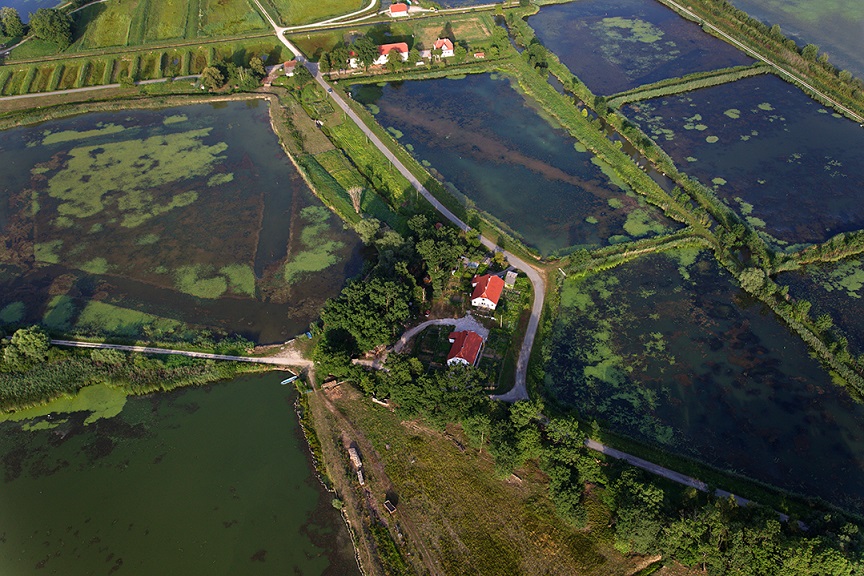
Crna Mlaka in Jastrebarsko / Public Institution Green Ring of the Zagreb County
On this day in 1971, the Convention on Wetlands of International Importance, Especially as Waterfowl Habitat, was signed in the Iranian city of Ramsar. The Convention, known as the Ramsar Convention, obliges each signatory country to the general conservation of wetlands on its territory and provides a framework for international cooperation in protecting and sustainable use of wetlands.
Croatia has been a signatory to the Ramsar Convention since 1991, and the above mentioned Croatian wetland areas are on the Ramsar Convention's list.
As a contribution to implementing the Ramsar Convention in Croatia, three relatively small areas within the Neretva delta were proclaimed as special reserves last year. The places named "Blue Eye and Lake Desna," "Neretva's Estuary," and "Kuti" have preserved, unique, and representative wetland habitats and characteristic species of particular importance for Croatia.
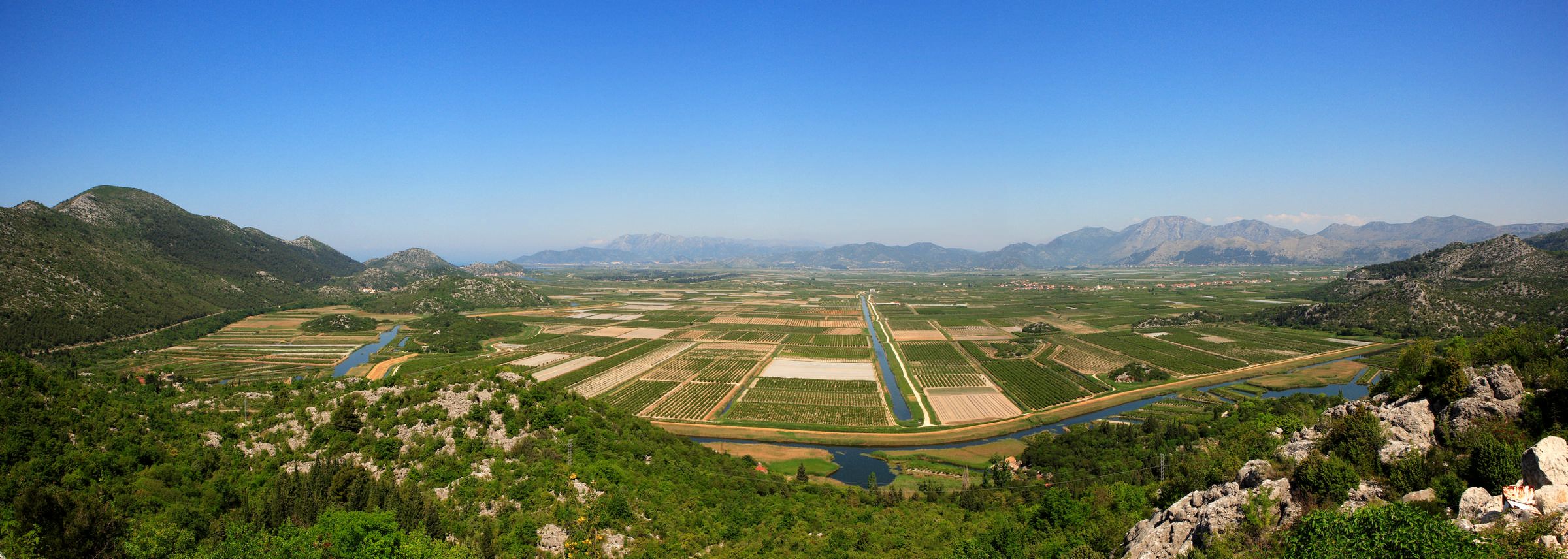
Neretva River / Copyright Romulić and Stojčić
Although wetland habitats represent one of the greatest values of biological and landscape diversity, since more than 40 percent of plant and animal species are associated with them, they are also the most endangered ecosystems in the world. In the last 50 years, 50 percent of all wetlands in the world have been lost.
Wetland areas as the best flood defense
Apart from being wet habitats for numerous plant and animal species, they are also crucial in adapting to climate change. Thus, wetland habitats are extremely important in flood defense, especially in Croatia.
Lowland rivers with moist habitats along their trough, into which they flow during high water levels, represent the best way to defend against floods. This is precisely how the flood defense system in Posavina was built. Thus, high waters of the Sava River flow into the Lonjsko Polje Nature Park floodplains, while Kopački Rit Nature Park "receives" high waters of the Drava and Danube, thereby changing their landscapes.
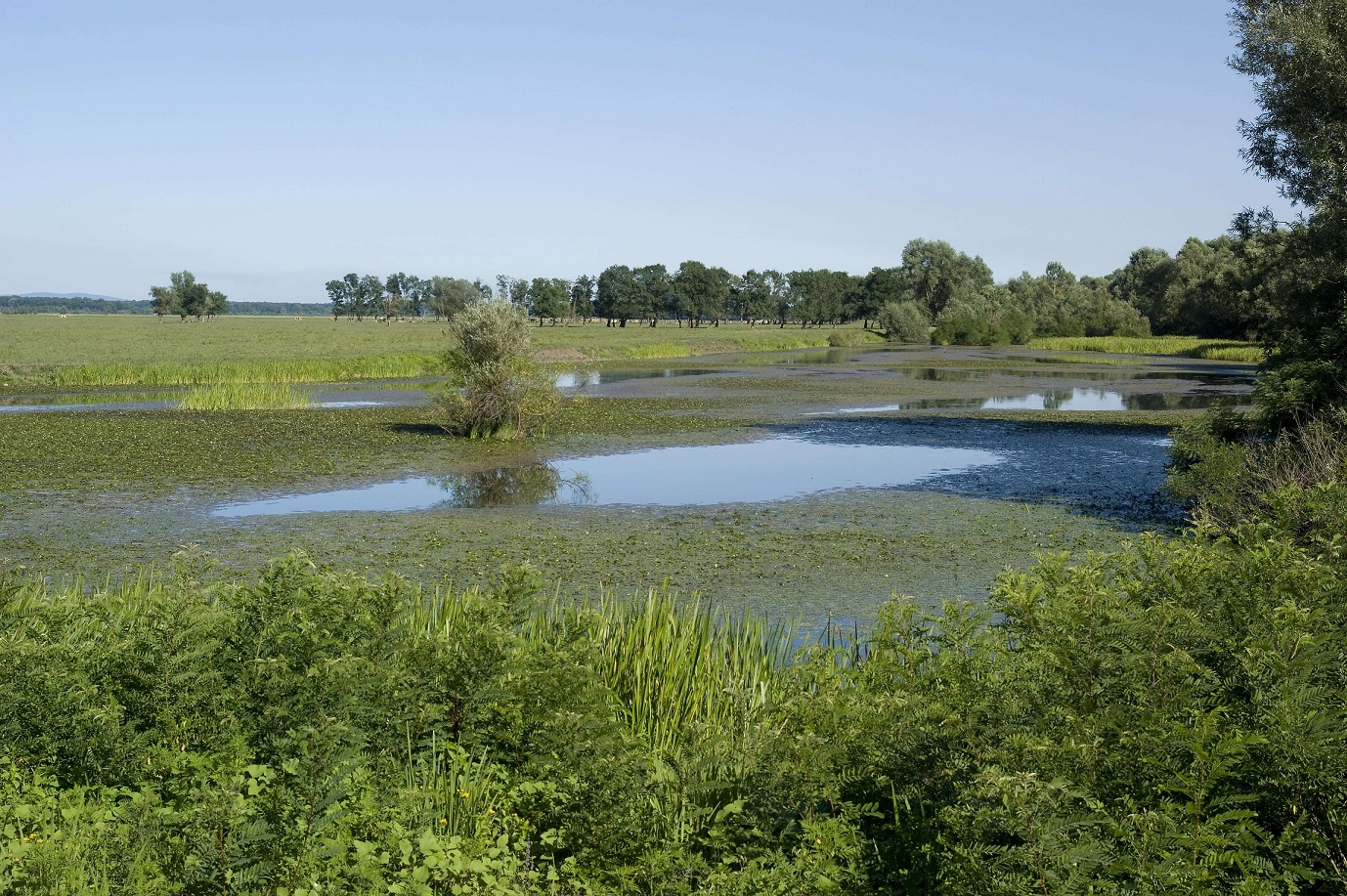
Lonjsko Polje Nature Park
The value of wetland habitats is also related to the restoration of groundwater supplies, the consolidation of shores, the retention of nutrients and sediments, and water purification. On World Wetlands Day, public institutions that manage protected areas in Croatia organize numerous activities.
Due to epidemiological measures, Lonjsko Polje Nature Park will not organize the traditional gathering "Future on the edge of the swamp" this year. However, the importance of water and wetlands will be discussed at a small event at the Public Institution headquarters in Krapje.
As part of this event, Matica Hrvatska's branch from Kutina will review the meetings "Future on the Edge of the Swamp" in the last 20 years. Employees of the Public Institution will participate in a workshop on the construction of roof platforms for white stork nests.

Village of Krapje / Lonjsko Polje Nature Park Boris Krstinić
In Northern Dalmatia, Vrana Lake Nature Park continues cooperation with the School of Applied Arts and Design in Zadar. Students will have virtual and field lectures on the topic of wetlands, their importance, and rich biodiversity, emphasizing birds. Students will create illustrations of different bird species presented in a virtual exhibition on the Park's website.
The traditional 9th "Bird Masquerade" will be organized for primary school students, and students from 1st to 4th grade of local primary schools will make masks of wetland birds. On February 6, free bird watching will be organized for all visitors.
The promotional video "Vrana Lake Nature Park: a place where birds always return" by the author Goran Šafarek will be shown for the first time:
Kopački Rit Nature Park traditionally celebrates World Wetlands Day in cooperation with Elementary School in Bilje. Second-grade students prepared artworks, literary ensembles, and a musical performance on the topic of Kopački Rit and its natural features. A lovely presentation of their work is also available online.
The Public Institution for the Management of Protected Nature Areas of the Dubrovnik-Neretva County conducts education on the importance of wetlands through an LED screen in Metković, where images with short educational texts about wetlands will be shown.
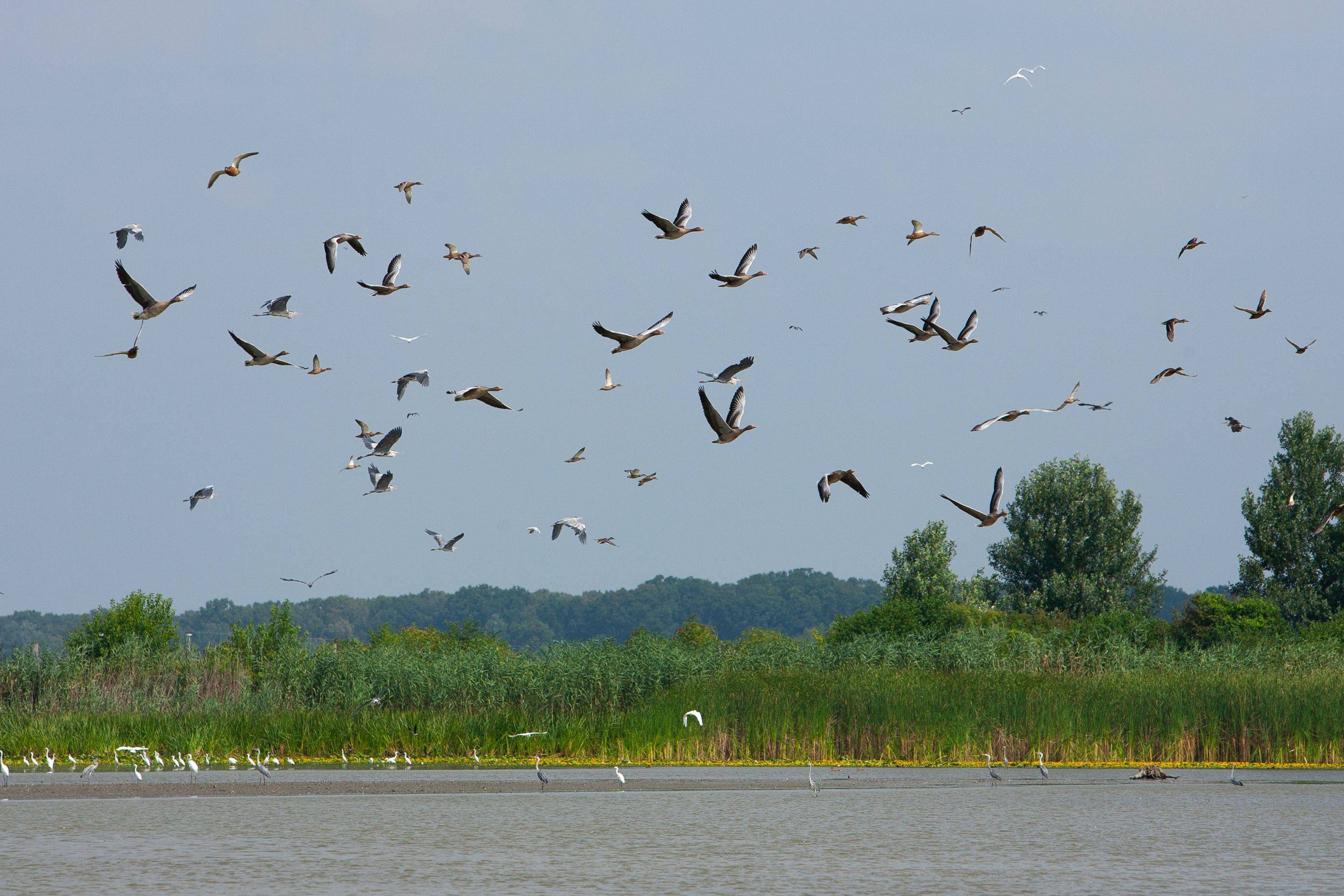
Kopački Rit Nature Park / Copyright Romulić and Stojčić
Trogir Flooded Twice in 2019: Seaboard Repairs Not Enough
In ten days, repairs will begin on a damaged section of the Čiovo seaboard in Trogir. Therefore, Čiovo residents will finally have seventy meters of their damaged and destroyed seaboard repaired, but repairs won't be enough, the city's mayor warns.
Trogir is a historic town and harbor on the Adriatic coast in Split-Dalmatia County, Croatia, and has a total municipal population of 13,260. The historic city of Trogir is situated on a small island between the Croatian mainland and the island of Čiovo. It is located 27 kilometers west of the city of Split.
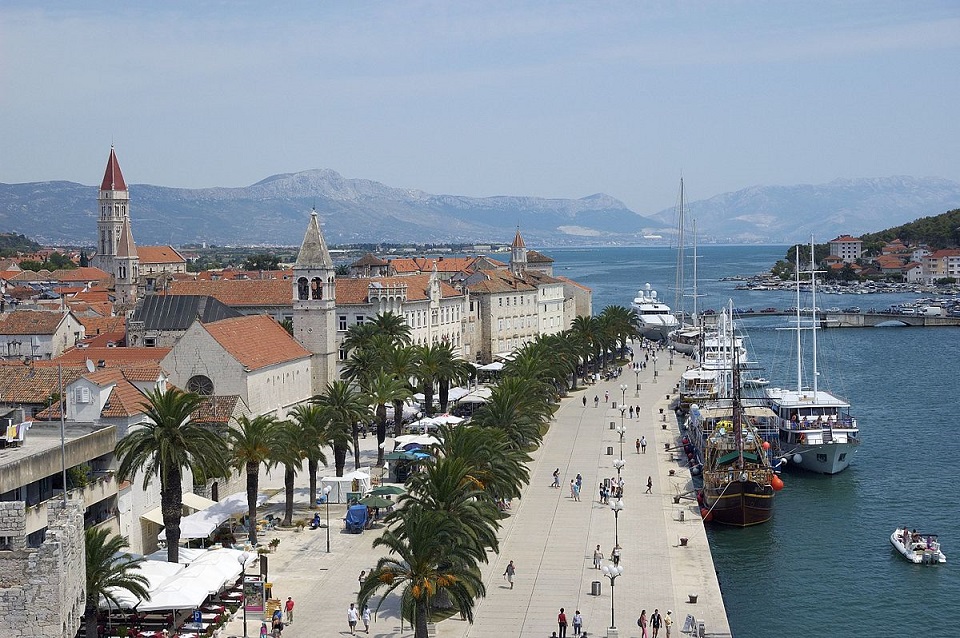
Trogir | Wikimedia Commons
The historic center of Trogir has been included in the UNESCO list of World Heritage Sites for its Venetian architecture since 1997.
“This investment is worth around 500,000 HRK (67,100 EUR). We had a problem with a ship which was illegally docked, but we have resolved it and the project should be finished in three months. In addition, we plan to make additional improvements the seaboard, port authority and town square,” said Ante Bilić, the mayor of Trogir.
Both the Čiovo and Trogir shorelines ended up underwater twice last year, in November and December. Many other Dalmatian cities have been experiencing similar fates according to HRT on January 9, 2020. Extreme windstorms (Bora), heavy rainfall and a sudden rise in sea level could be disastrous for coastal areas.
“It has happened in the past, but not as frequently. This can hardly be solved by raising the seaboard level because flooding also occurs from catchment and stormwater. We need to discuss these issues at the state level and with ministry of the environment, because this is everyone’s problem,” explained Mayor Bilić.
Scientists have been warning that sea levels could rise from 40 to 120 centimeters in the next hundred years. Without serious investment into preventative projects, the question is who will end up in the "front row to the sea."
Follow our Lifestyle page for updates on environmental concerns and the effects of climate change in Croatia.
Winds of "Spring Storm 2019" Hit; Forecasters Warn of Rain and Floods
In all fairness, we were warned: the weather forecasts late last week were quite clear, and even the European central weather warnings service Meteoalarm was clear that Sunday was supposed to bring strong winds throughout Croatia. The alarm was strongest for the central part of the country, where capital Zagreb is located, as well as regions around Velebit mountain, which are much more adapted too withstanding strong winds, as they are more frequent there. But, still, when Spring Storm 2019 hit Croatia yesterday, we were still surprised with the strength, and by now it's quite unusual how long it's been going on, especially in Zagreb.
If you've gone to literally any major Croatian website today, you probably saw numerous image galleries of damage that happened in Zagreb since Sunday afternoon when the worst of the winds started. This morning all emergency services asked the citizens of Zagreb not to go out into the storm unless they had to (of course, it's a normal workday, so people had to go to work, which lead to the mass extintion of umbrellas in Zagreb), and Zagreb Mayor Milan Bandić said that this was the worst wind-storm in Zagreb in the past 45 years. A similar event happened on November 11th, 2013, strong winds were also responsible for a lot of damage in Zagreb and on the Medvjednica hill, but the strong winds probably lasted for a shorter period of time.
Croatian Meteorological and Hydrological service published the table of the strongest winds recorded in Croatia this morning (wind speeds in km/h):
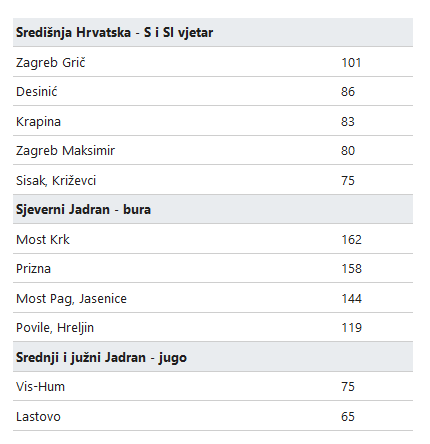
In addition to strong winds, a lot of rain was also forecast for parts of Croatia as a part of this storm, and a lot of rain has already fallen in certain areas of Croatia. Central, mountinous part of Croatia and parts of coastal Croatia received the most of the rain, but in the next 12 hours it is expected that the rainfall will increase in the rest of the country too. So, today the Meteorological service is warning that some flooding in Croatia can be expected once the rains hit in earnest.
The Spring Storm 2019 is the result of two separate weather masses hitting each other right above Croatia: a high-pressure cold air arriving from the North (which has already brought cold weather to most of Northern Europe) collided with the low-pressure cyclone centered around Southern Italy. The difference in the temperatures and the pressures created the winds, and the moisture which will be turned into rain is arriving from the South.
High Tide Floods Trogir, Omiš, and Stari Grad on Hvar
A couple of days of snow, a weekend of floods - is it time for spring yet?
Heavy Rains Cause Flooding in Crikvenica and Novi Vinodolski
Heavy rain has created problems on numerous roads in Croatia, including the Rijeka-Zagreb motorway.
Two Years After Floods Hit Gunja, Reconstruction Still Not Completed
However, the long rebuilding effort is nearing its completion.


